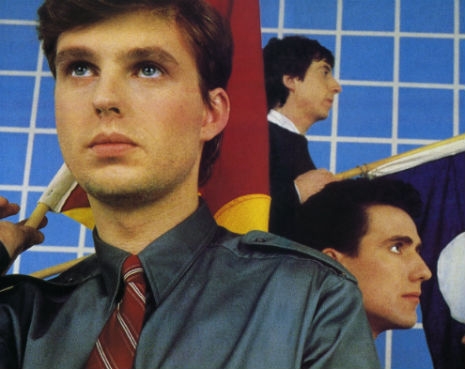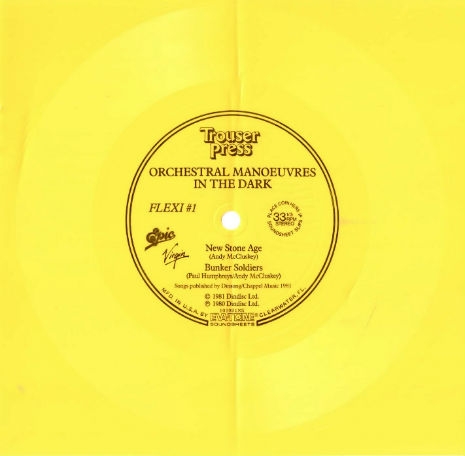
A few years ago there was a theory that Kraftwerk was the “most influential group in pop history.” The pitch goes something like this: The Beatles’ influence lasted about thirty-plus years while the electronica heralded by Kraftwerk continues to be of influence to this day. One of the chief proposers of this argument was Andy McCluskey from Orchestral Manoeuvres in the Dark who said:
When you listen to pop now, do you hear the Beatles, or do you hear electronic, synthetic, computer-based grooves?
It’s a moot point as nearly everything is electronic today. McCluskey clearly remembers the day he first heard the future of music—when Kraftwerk played the Liverpool Empire on September 11th, 1975. Though the venue was about half-full, this gig had far-reaching consequences. It was a starting pistol announcing the launch of bands like OMD, the Human League and Cabaret Voltaire who were to pioneer electronic music in Britain.
When OMD signed to Factory Records, McCluskey was utterly horrified when label supremo Tony Wilson said their music was the future of pop. OMD saw themselves (quite rightly in many respects) as creating serious artistic music. Though McCluskey vehemently disagreed at the time, Wilson has been proven right. Yet it wasn’t until Gary Numan, Visage, Soft Cell, and in particular Depeche Mode, could synthpop be said to have truly arrived.
Depeche Mode was originally a guitar band from Basildon, Essex called No Romance in China. It was formed by two schoolmates Vince Clarke and Andy Fletcher in 1977. The line-up changed as different members came and went until the band morphed into Composition of Sound with the arrival of Martin Gore on guitar.
When Clarke saw OMD in concert in 1980, he reinvented the group as wholly synthesizer-based band. With the addition of Dave Gahan on vocals, Depeche Mode were complete.
Clarke was the principal songwriter and main driving force behind the band. At the time he was working as a delivery driver for a lemonade company to pay for his synthesizer. They recorded a demo and hawked it around to different labels, yet, it wasn’t until Daniel Miller—head of the newly formed electronic record label Mute—saw Depeche Mode play a gig in London that he offered them a deal on the spot
Miller was one of the pioneers of electronic music. As The Normal he released two seminal singles “T.V.O.D.” and the J.G. Ballard-inspired “Warm Leatherette.” One of the reasons he offered Depeche Mode a contract—apart from the obvious synthpop association—was the fact people at the gig weren’t watching the band play, but dancing joyously to their songs.
Watch Depeche Mode perform, after the jump…








